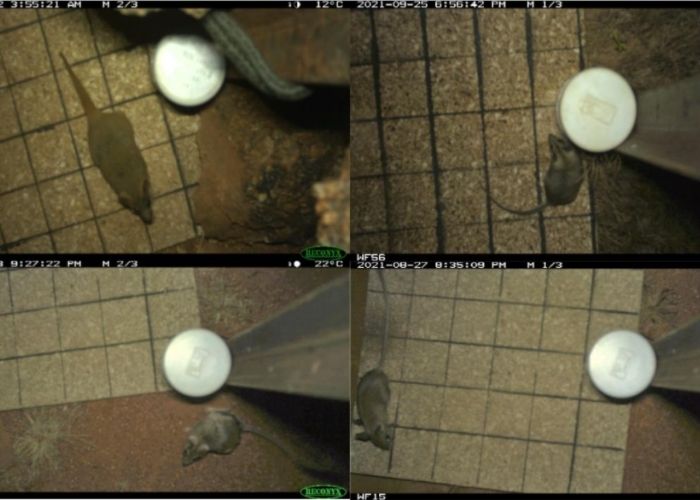AWC ecologists visited the remote Wooleen Station in the southern rangelands of Western Australia late last year, to conduct a preliminary biodiversity assessment of this outback station. A team of five AWC ecologists took part, invited by Wooleen’s owners David and Frances Pollock to support their commitment to restoring the natural landscape across the 152,000-hectare pastoral property.
Wooleen Station operates under an environmentally focused, low-density pastoral lease and maintains a small herd of cattle. Owners David and Frances have diversified pastoral activities to include conservation and ecotourism and their efforts to reverse land degradation have already contributed to the recovery of vegetation and wildlife across the property.
 Joshua Hungerford/AWC
Joshua Hungerford/AWC
Over seven nights, David and Frances joined AWC ecologists as they conducted spotlighting surveys and deployed 50 camera traps. Cameras were left in situ at 25 sites for a 52-night period, resulting in a mammoth 43,191 images captured. Detections included 24 birds, 7 reptiles and 12 mammal species.
One of the species detected was a suspected Kultarr, a small nocturnal marsupial of which sightings are rare. The team also spotted the small carnivorous Woolley’s False Antechinus, Wedge-tailed Eagles and Spinifex Hopping Mice.
 Carly Moir/AWC
Carly Moir/AWC
“We went into the survey not knowing what to expect and came out really happy with the number of detections on cameras and in person,” said Phoebe Dickins, AWC Field Ecologist. “It was really exciting to see that they have a diversity of bird, reptile and mammal species and the large-scale restoration that has occurred across the property – a testament to the extensive efforts David and Frances have put into caring for the landscape.”
AWC rigorously measures biodiversity and ecological health across our sanctuaries and partnership areas and is building a picture of how wildlife is faring across Australia. Surveys like this one at Wooleen add crucial information to this bigger, continental scale picture.
 AWC
AWC
“David and I were delighted to welcome the AWC team to Wooleen Station in 2021,” said Frances. “It was a fantastic opportunity to share our intimate knowledge with experts and to gain a deeper understanding of our landscape. There is nothing better than hanging out with like-minded people.”
“We often see tracks or flashes of movement whilst working at Wooleen, but have lacked the hard evidence to confirm our suspicions. The anticipation to check the cameras was almost unbearable – but absolutely worth the wait to reveal the variety of wildlife.”
 AWC
AWC
Tim Allard, AWC Chief Executive Officer, also commended David and Frances on their efforts in repairing and restoring the natural landscape, saying that they are developing a refuge for Australian wildlife.
“We applaud David and Frances on their efforts in creating a different path for this large pastoral property,” said Tim. “Having established a method for measuring biodiversity and ecological health across our own sanctuaries and partnerships, we’re now starting to build up a picture of how wildlife is faring across Australia. Surveys like this one at Wooleen add crucial information to that bigger, continental scale picture.”
Support Australian Wildlife Conservancy and safeguard the future of Australia's native species
Donate Now